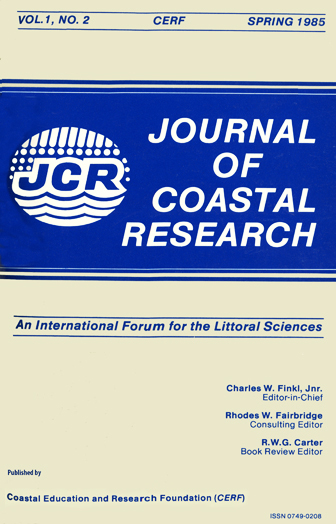The Relationship of Emerita talpoida to Beach Characteristics
Keywords:
Beach ecology, beach processes, beach slope, foreshore, molecrab, Emerita talpoida, spatial and temporal variation, wave energyAbstract
The distribution of Emerita talpoida on the foreshore is strongly influenced by inshore processes and the grain size and morphology of the beach deposit. E. talpoida populations increase in density across the foreshore toward the lower part of the beach (step). High density cells frequently lie within areas of reduced wave energy such as in the troughs of beach cusps. The depth at which Emerita occur within the sediment of the upper beach is rarely more than 5cm. Their numbers increase and they burrow deeper toward the lower part of the beach. Structures extending across the foreshore such as the research pier used in this study, modify wave action and thus cause redistribution of beach sediment and beach morphology. This, in turn, results in modifications of E. talpodia distributions. Onshore migration of the overwintering population occurred in early April during a period of rapidly increasing water temperature. Numbers increased through spring and summer to a seasonal maximum in late summer and early fall. Large and rapid fluctuations in the population are superimposed on the seasonal cycle. These fluctuations are related to variations in wave energy and tide level, and reflect onshore and offshore migration in response to energy conditions and feeding requirements.


